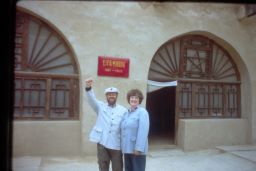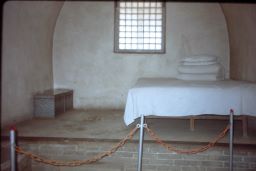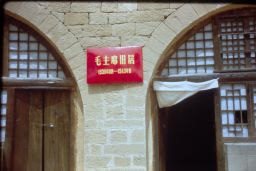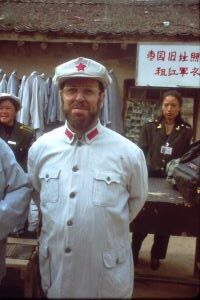FDIB–OR HOW WE SPENT PART OF OUR SUMMER VACATION IN ASIA
BY
Frederick B. Hoyt, Illinois Wesleyan University
Gerald Olson, Illinois Wesleyan University
Some of my favorite memories of elementary school occurred annually after Labor Day, when an unprepared teacher would try to ease us back into school by asking us what we had done during our summer vacation. It was at that point that nostalgia and memories grew, replacing reality and expectations.
Thus, it is with warm feelings (at least on my part) that we share with you our experiences with the Faculty Development in International Business trip we took last May and June to Asia. Conducted jointly–and there’s a  lesson in that–by Texas A & M with the University of Hawaii, the trip offered 20 faculty a smorgasbord of experiences in five countries–Korea, Japan, Hong Kong, Shenzhen in the People’s Republic of China, and Thailand. Notice that these countries span the spectrum from mature industrial power (Japan) to up and coming wannabes.
lesson in that–by Texas A & M with the University of Hawaii, the trip offered 20 faculty a smorgasbord of experiences in five countries–Korea, Japan, Hong Kong, Shenzhen in the People’s Republic of China, and Thailand. Notice that these countries span the spectrum from mature industrial power (Japan) to up and coming wannabes.
Faculty
One of the benefits of a trip of this nature comes from the opportunity to meet with other faculty–not just from other colleges, but also from other disciplines–and from a range of schools. Believe me, you really get to know them in the course of two weeks where they can be your companions–sometimes your only other English-speakers–for 12-16 hours a day.
They ranged, too, from first time visitors to Asia to moderately experienced visitors to Asia. Professor Olson and I fell into the latter range, having been on, or led student trips. My area is marketing, but I have had a long-standing love affair with anything Chinese; I had not, however, been to Tokyo or Bangkok, nor done much in a business sense in Seoul (though I’d been there). Hence, one of my motivators in going on the trip was to broaden my knowledge of Asia beyond East Asia, and to deepen my understanding of business there. [Jer–your confessional spot]
At every site visit–and there were three to four a day–our colleagues brought a variety of perspectives and diversity of questions to the table, insights not always readily apparent to a customer-focused marketer. There were also the long rides (no other adjective applies to transportation in Asia, whether it was a bus ride in Bangkok or an international flight across the Pacific), or meals, or free time, where conversation ranged from common concerns and complaints, to what did you think about what we saw today, to some discussions about possible joint ventures. Out of one such discussion came this paper, and several panels.
Site Visits
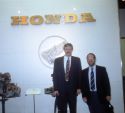
 Perhaps the strongest feature of the trip were the site visits, arranged through the guanxi of our hosts. Using business and alumni contacts, Professors Julian Gaspar and Lane Kelley got us into places that read like a who’s who of Asian business. In Tokyo, the embassy and in Seoul, the chaebols–Samsung, Daewoo, Hyundai, and Hanwha; in Hong Kong, Motorola; IBM in
Perhaps the strongest feature of the trip were the site visits, arranged through the guanxi of our hosts. Using business and alumni contacts, Professors Julian Gaspar and Lane Kelley got us into places that read like a who’s who of Asian business. In Tokyo, the embassy and in Seoul, the chaebols–Samsung, Daewoo, Hyundai, and Hanwha; in Hong Kong, Motorola; IBM in 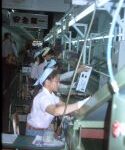 Shenzhen; and the stock exchange and Nike in Bangkok. These were medium level visits, and above, with opportunity for question and answer at some, and schmoozing opportunities at others.
Shenzhen; and the stock exchange and Nike in Bangkok. These were medium level visits, and above, with opportunity for question and answer at some, and schmoozing opportunities at others.
Though, to my way of thinking, there were not enough visits to consumer goods and services producers (and given the nature of Asian businesses or my insatiable appetite for more marketing oriented stops, there probably could not have been enough). We have tried to arrange similar visits for trips we have led; hence, we know how difficult it is to make the necessary contacts, especially for the variety of companies we visited. At least one of the businesses-focused trips to China that I paid to go on was slightly above a shopping tour; visit the factory on your way to the factory outlet store. Seeing assembly lines, and talking with plant managers did, however, delight many members of our group, And I did learn a lot about factories, and machinery, and widgets.
Cultural Time
Although business tends to neglect the past, that is obviously much harder to do in Asia, where vestiges of Tang China still infuse the business civilizations of Korea and Tokyo. Partly, we suspect, in recognition of the persistence of the past, partly in recognition of the first-time visitors in our group, and maybe because businesses were closed on Sunday and frequently 
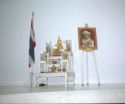 on Saturday, we visited cultural sites. Some of that was built into the trip, such as a Kabuki dinner in Tokyo, and similar cultural experiences in Seoul, where the farmers’ dance reminds me of United Airlines and Korea (the power of advertising), and Bangkok; and we visited palaces in Seoul and ruins in Thailand. Some of the cultural experiences were on our own. During “free time”–early a.m. walks, Sundays, and some evenings–we could get out of the plush 5 star hotels where we were housed and rub shoulders with the rest of Asia, whether in the Polo and porn markets of Bangkok or the night markets of Hong Kong. I well remember a Star Ferry trip to one of the outlying islands in the still Crown Colony of Hong Kong, where I had an enjoyable fresh fish dinner; you need to be from the midwest, preferably a small town, to realize what a cultural shock that might be to meat and potatoes mentality types. Two other “cultural moments”–being in Thailand for the king’s 50th year celebrations, and being in Korea for its Memorial Day stand out.
on Saturday, we visited cultural sites. Some of that was built into the trip, such as a Kabuki dinner in Tokyo, and similar cultural experiences in Seoul, where the farmers’ dance reminds me of United Airlines and Korea (the power of advertising), and Bangkok; and we visited palaces in Seoul and ruins in Thailand. Some of the cultural experiences were on our own. During “free time”–early a.m. walks, Sundays, and some evenings–we could get out of the plush 5 star hotels where we were housed and rub shoulders with the rest of Asia, whether in the Polo and porn markets of Bangkok or the night markets of Hong Kong. I well remember a Star Ferry trip to one of the outlying islands in the still Crown Colony of Hong Kong, where I had an enjoyable fresh fish dinner; you need to be from the midwest, preferably a small town, to realize what a cultural shock that might be to meat and potatoes mentality types. Two other “cultural moments”–being in Thailand for the king’s 50th year celebrations, and being in Korea for its Memorial Day stand out.
Impressions/Vignettes
We had been to Asia before, and in fact, Professor Hoyt had just left students in Korea before joining the FDIB group in Honolulu and going back across the Pacific. But these were new countries, better business visits, or the passage of time–and the changes in Asia are no longer glacial in rapidity. Thus, there were additional reflections. Three (?) come readily to mind. First, we can no longer ignore the Asian economy because Asia is not just the future. Asia is now. The changes in the coastal cities of China in the seven years I’ve gone there are phenomenal; they went from the 1940s to the 1990s, from the jazz of the Sassoon House to the Hard Rock cafe–without many of the intervening steps. Not all that is good–the sun does not shine in many Asian cities, and even worse, McDonald’s and Karaoke threaten to undermine civilization as we know it. Yet the fact is obvious–the Asian economy has become a major player in the world economy. Japan already is, but Korea and China are there too. As I tell my students, English is being taught in the Chinese schools. How many of them are learning Chinese? It has become intertwined with our own–our trade deficit with the People’s Republic is larger than with Japan, and sure to grow after Hong Kong becomes a “Special Administrative Region.” However, what finally hit this trip is that Asia is now producing for the Asian market—not as a colonial economy producing for the triad!
Second, the attention to costs that dominates the business pages is not only globally caused; at least in part, it is a global concern. We were in the loveliest factory in Bangkok, which makes running shoes. More a pavilion than a “factory, “ It was certainly a sweatshop for Europeans in June. The manager, a non-perspiring young woman, told us the factory was having trouble competing in global markets because of the rising standard of living in Thailand. Wages were getting out of hand, she stated. How much is too much? $5 a day. Michael Jordan are you listening–Caterpillar employees, do you know that?
Finally, everyone familiar with Japan knows that Japan is the most expensive country in the world. If you have been there, you know that fresh fruit can be $25 a watermelon. It is not surprising that when the Japanese travel, they buy everything–golf courses, whole cities, hotels. The whole world is cheaper. Protectionism has helped make Japan competitive globally–at the expense of consumers. Everywhere I went in Japan, I asked about consumerism–does it exist. Knowledge about the outside world comes through clearly in Japan. Everyone said there is no consumer revolt, and indeed, the major topic of the political parties is the sex life of the emperor and empress–will they have an heir?
Then, one of our businessmen said something about the J. Crew catalog being available on the Web, and it hit me that this was consumerism at its finest–the creation of a truly global marketplace that is pull, rather than push oriented. But that’s another paper.
Summary/Conclusions
The FDIB trip had all the characteristics of a trip I would have designed–full days meeting real business people, with business cards and an address for further contacts, a blend of culture and business, a range of countries, overall, an excellent introduction to the varieties of Asian businesses and civilizations. One outcome is curricular–we’re introducing an Asian/Pacific business course at Illinois Wesleyan next year. Another is that our trips to Asia will be using some of the contacts for site visits–particularly one outspoken Hong Kong woman who argued forcefully for cultural immersion for us and our students.
Finally, while we were glad to return home, Asia can be like the joke about Chinese food. An hour later, you want to go back. I guarantee that for many of the first time visitors to Asia on this trip, it will not be their last. I’m hungry for more, but the FDIB trip helped me know what to order.
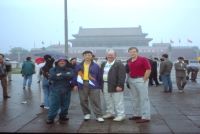 me. It was, however, done in reverse from the usual Asia trip, which duplicated many traditional journeys, where you wound up eventually in Beijing with an audience with the Emperor. This trip started in Beijing and eventually ended in SE Asia.
me. It was, however, done in reverse from the usual Asia trip, which duplicated many traditional journeys, where you wound up eventually in Beijing with an audience with the Emperor. This trip started in Beijing and eventually ended in SE Asia.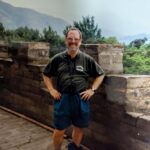 were, after all, accountants). A few memories: the
were, after all, accountants). A few memories: the 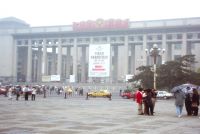 countdown clock in Tiananmen Square, ticking down on the “handover” of Hong Kong; Amber Kujath and others catching me with my pants (legs) down on the Great Wall. The zip offs, discovered initially at Banana Republic and used at Philmont in 1987 have become stock in trade for me. Shorts when needed, long pants when not.
countdown clock in Tiananmen Square, ticking down on the “handover” of Hong Kong; Amber Kujath and others catching me with my pants (legs) down on the Great Wall. The zip offs, discovered initially at Banana Republic and used at Philmont in 1987 have become stock in trade for me. Shorts when needed, long pants when not.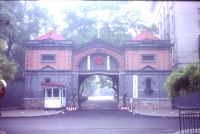 the 20s and 30s), the Legation Quarter always fascinated me. It was, in a sense, another Forbidden City in the early 20th century, a refuge from the turmoil of China (and the attacks during the Boxer uprising). Many of the buildings remain, including the entrance to the old Japanese Legation. Several trips I had guides take us through the old area to get a sense of what life had been like; today, the embassies are housed in a new area in more modern facilities–but still closely guarded.
the 20s and 30s), the Legation Quarter always fascinated me. It was, in a sense, another Forbidden City in the early 20th century, a refuge from the turmoil of China (and the attacks during the Boxer uprising). Many of the buildings remain, including the entrance to the old Japanese Legation. Several trips I had guides take us through the old area to get a sense of what life had been like; today, the embassies are housed in a new area in more modern facilities–but still closely guarded.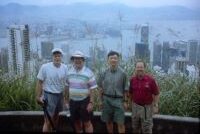 Hong Kong. Always a welcome place to eat, shop, and sightsee. On this trip, I arranged a visit to City University of Hong Kong, which my friend Eleanor hosted. And of course, the Peak is a visual treat.
Hong Kong. Always a welcome place to eat, shop, and sightsee. On this trip, I arranged a visit to City University of Hong Kong, which my friend Eleanor hosted. And of course, the Peak is a visual treat. 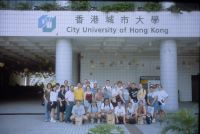
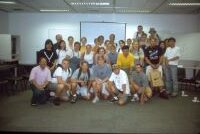
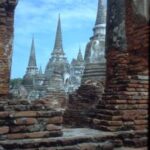 not make the Siamese and Thais best friends. The destruction caused
not make the Siamese and Thais best friends. The destruction caused  Thais to move the capital to Bangkok. The business trip was to a contract manufacturer for athletic shoes, who gradually became vary defensive about its labor practices!
Thais to move the capital to Bangkok. The business trip was to a contract manufacturer for athletic shoes, who gradually became vary defensive about its labor practices!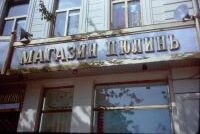
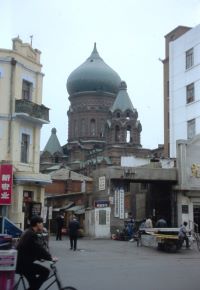
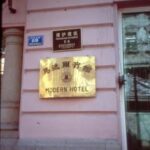
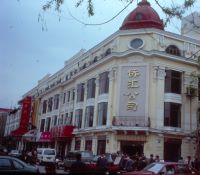
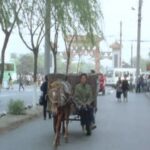
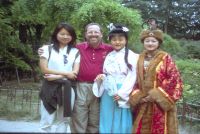
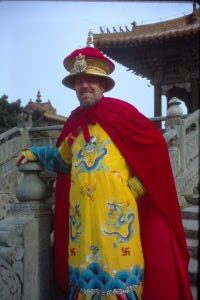
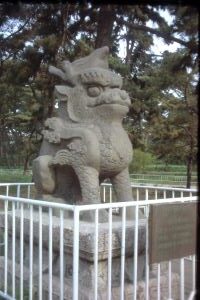
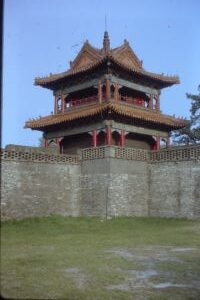
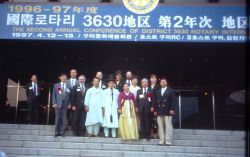
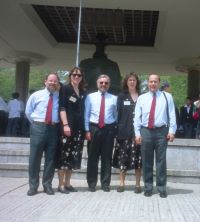
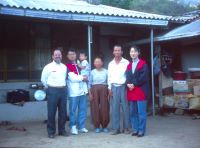
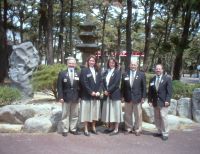
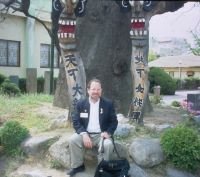
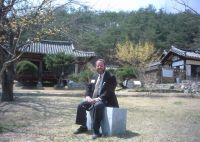
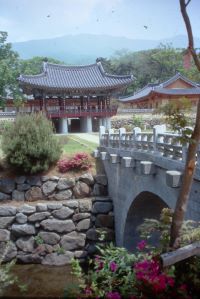
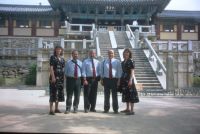
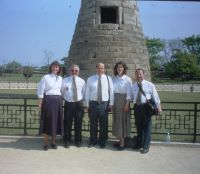

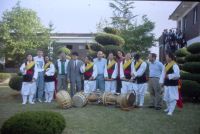
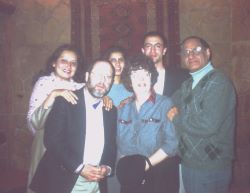
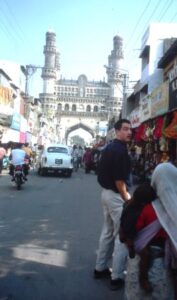
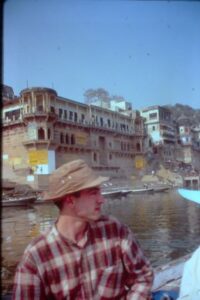
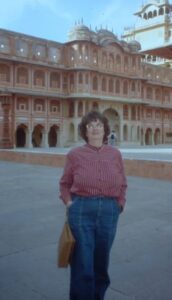
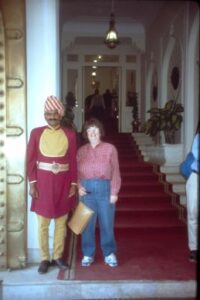
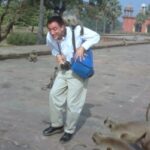
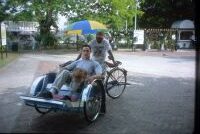
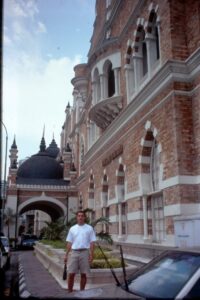
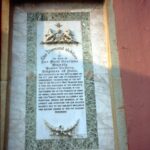

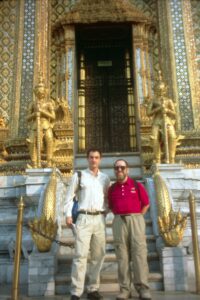
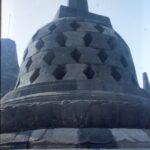
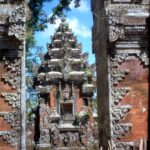
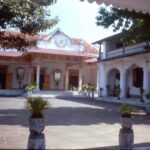
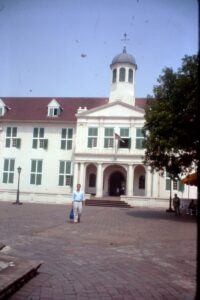
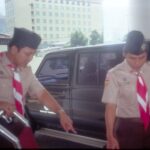
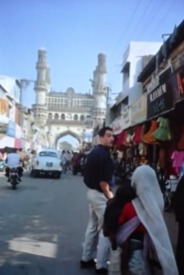

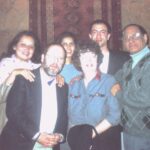
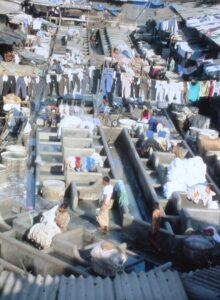
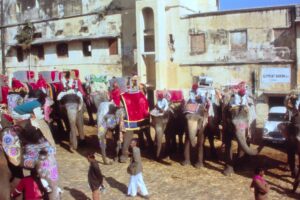
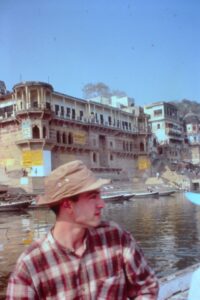
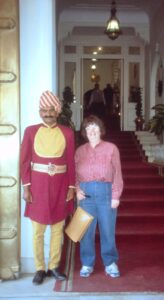
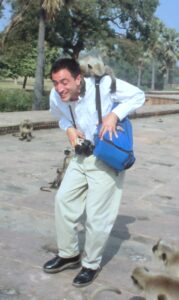
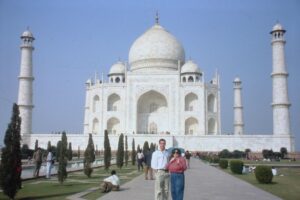
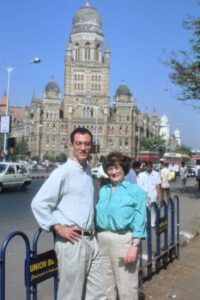
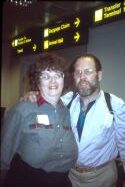

 Delegation, stayed at the building HK Scouts built as combination headquarters, hotel, and office building. Dealing with multiple religions was a really different “religious” service, truly non denominational. The other highlight was a “potluck”, one of the best meals
Delegation, stayed at the building HK Scouts built as combination headquarters, hotel, and office building. Dealing with multiple religions was a really different “religious” service, truly non denominational. The other highlight was a “potluck”, one of the best meals 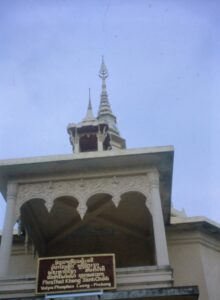 I’ve had at a Scout
I’ve had at a Scout
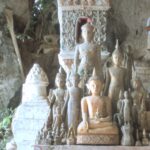
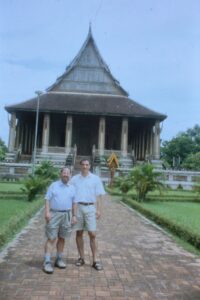 group that included the head of Australian Scouting (a volunteer), Singapore, etc. Best fraternity party since 1962. Memories….then we left for Bangkok, Chiang Mai (I discovered Sibelius on a Japanese Symphony broadcast) and thence to Laos. That part of the trip is detailed elsewhere.
group that included the head of Australian Scouting (a volunteer), Singapore, etc. Best fraternity party since 1962. Memories….then we left for Bangkok, Chiang Mai (I discovered Sibelius on a Japanese Symphony broadcast) and thence to Laos. That part of the trip is detailed elsewhere.





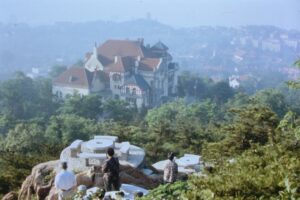 I was (and still am) fascinated with Qingdao, and in May 1996, after leading a May Term, indulged that interest in touring the Shantung peninsula. It was my first trip in China on my own, which meant, essentially, going from town to town in a car with driver. The driver was Feng Hong, or “red wind,” a classic Cultural Revolution name. His English was confined to “Michael Jordan #1,” incontestably true for the greatest of all time. In fact, one of my fondest memories of Michael Jordan was watching a finals game in a yogwan in Korea (a room with a condom dispenser). The announcer (Taiwanese) watched Jordan float from the top of the key to the basket, and said, “Wow.” Not a Chinese word, but a universal description of MJ.
I was (and still am) fascinated with Qingdao, and in May 1996, after leading a May Term, indulged that interest in touring the Shantung peninsula. It was my first trip in China on my own, which meant, essentially, going from town to town in a car with driver. The driver was Feng Hong, or “red wind,” a classic Cultural Revolution name. His English was confined to “Michael Jordan #1,” incontestably true for the greatest of all time. In fact, one of my fondest memories of Michael Jordan was watching a finals game in a yogwan in Korea (a room with a condom dispenser). The announcer (Taiwanese) watched Jordan float from the top of the key to the basket, and said, “Wow.” Not a Chinese word, but a universal description of MJ.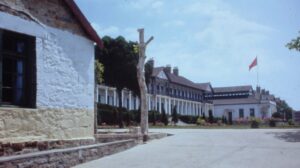
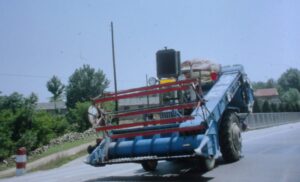 I also remember asking Feng Hong to stop at one point so I could take pictures of a harvesting team of machinery that was the most mechanized agriculture I had ever seen in China. Combines in China. A first.
I also remember asking Feng Hong to stop at one point so I could take pictures of a harvesting team of machinery that was the most mechanized agriculture I had ever seen in China. Combines in China. A first.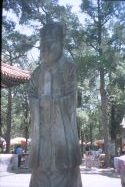
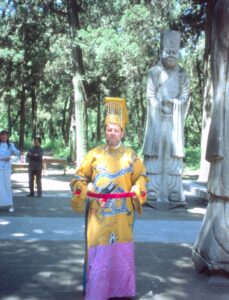 China) of a philosopher who encouraged order and obedience. The Confucian exams for centuries defined winners and losers in the civil service, and remnants of the rote learning it required are still embedded in China’s educational system. Qu’fu was one of the few places in China I saw stars and heard birds (not in cages). It was tranquil, in other words.
China) of a philosopher who encouraged order and obedience. The Confucian exams for centuries defined winners and losers in the civil service, and remnants of the rote learning it required are still embedded in China’s educational system. Qu’fu was one of the few places in China I saw stars and heard birds (not in cages). It was tranquil, in other words.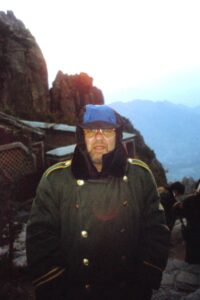 The literal highlight of course was Tai Shan, one of the most sacred mountains in China. It’s where Mao said, “The East is Red,” but Confucius sagely remarked, “The Earth is small.” I stayed in a Chinese-speaking
The literal highlight of course was Tai Shan, one of the most sacred mountains in China. It’s where Mao said, “The East is Red,” but Confucius sagely remarked, “The Earth is small.” I stayed in a Chinese-speaking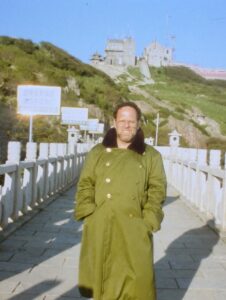 guesthouse. At an ungodly hour, the phone rang and a voice announced (my translation—get up and get dressed, daybreak is coming). There was a PLA topcoat in the closet to protect me from the mountain chill; I threw it on and joined the throngs there to watch the sun come up over China. You can see me in the pictures: I’m the one without the cigarette.
guesthouse. At an ungodly hour, the phone rang and a voice announced (my translation—get up and get dressed, daybreak is coming). There was a PLA topcoat in the closet to protect me from the mountain chill; I threw it on and joined the throngs there to watch the sun come up over China. You can see me in the pictures: I’m the one without the cigarette.